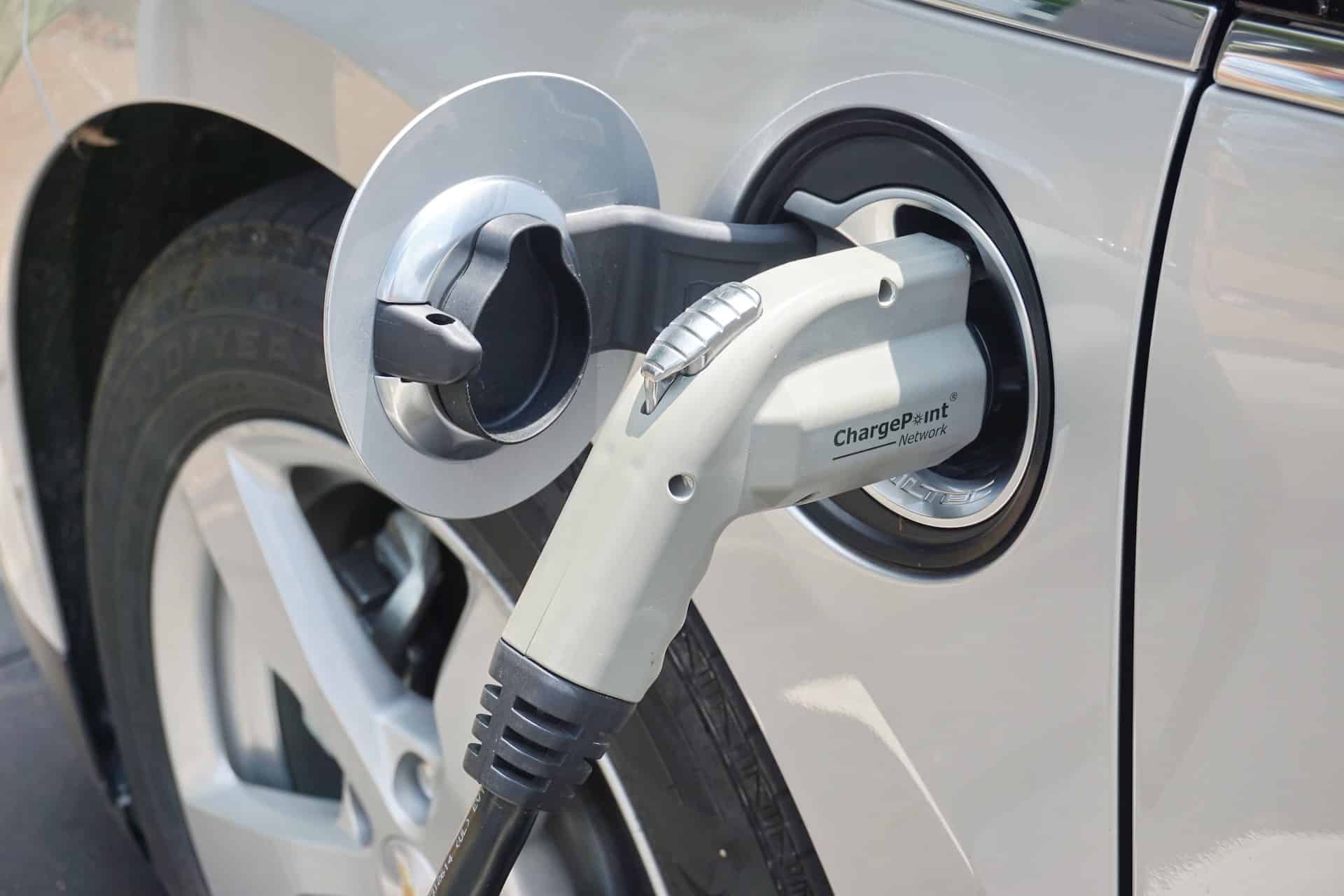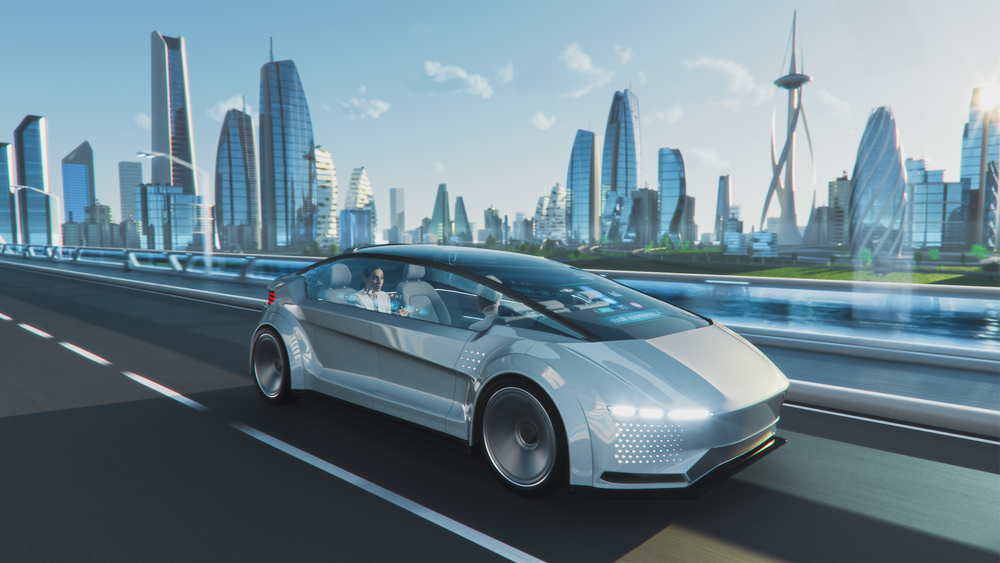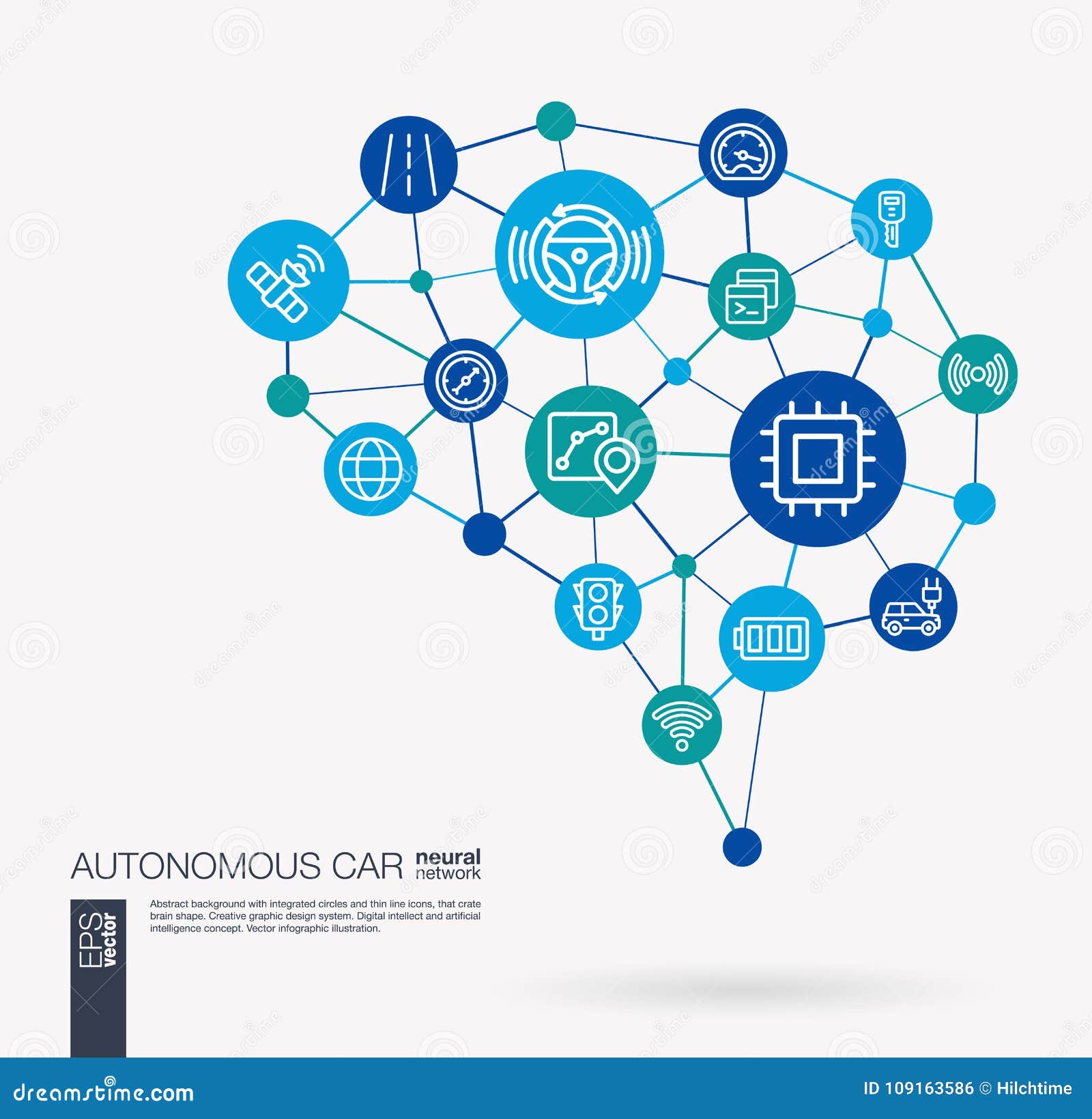Strap in and crank up the voltage as we electrify the lanes of the future, fuelled by silver-screen science fiction turned reality. Welcome to the world of Artificial Intelligence and Autonomous Driving, tech’s most dynamic duo, pushing the boundaries of what’s possible for electric vehicles. Promising to revolutionize our roads with precision, efficiency, and an uncanny sense of familiarity, this high-tech pairing is supercharging the path to a cleaner, smarter mobility landscape. So sit back, or should I say step back, as we explore this riveting intersection of AI and self-driving technology in the realm of electric vehicles.
Overview of AI and Autonomous Driving

Two components of future technology that are making significant headway are artificial intelligence (AI) and autonomous driving. Their applications span various fields but are increasingly becoming paramount in the world of electric vehicles (EVs). AI, a computer system that replicates or mimics human intelligence, is becoming integral to autonomous driving capabilities, ushering in an era of self-driving electric cars.
In essence, autonomous driving refers to the technology whereby a vehicle drives itself by interacting with the environment and making decisions independently. The process embeds deep learning and machine learning algorithms, subsets of AI, to process significant amounts of data collected from several sensors installed in the car. This data interpretation allows the vehicle to perceive obstacles, identify road signs and signals, anticipate flying objects, or predict another vehicle’s probable path.
There are different degrees of autonomous driving, starting from Level 0, where all driving tasks are human-operated, to Level 5, where all tasks are entirely conducted by the vehicle, requiring no human intervention. Most currently operational autonomous vehicles are at Level 2 or 3, offering features such as automated braking, acceleration, and steering under certain conditions.
Advancements in AI have enabled remarkable strides in autonomous driving by further refining techniques and algorithms that make automatic navigation more accurate and dependable. Self-driving vehicles can now process data more rapidly and make faster, safer decisions. The day where human drivers are redundant, or at least optional, in EVs now seems a foreseeable reality. But, the journey to that reality is filled with technical challenges and stringent safety considerations that yet need to be met in the evolution of AI and autonomous driving technologies.
Associating artificial intelligence with autonomous driving has led to more efficient, safer, and environmentally friendly electric vehicles. This combination of technologies has unlocked the potential for revolutionary changes in the way we perceive mobility and transport—an aspect not only of scientific interest, but also of socio-economic significance.
The Intersection of AI, Autonomous Driving, and Electric Vehicles

The intersection of AI, autonomous driving, and electric vehicles signifies a significant shift in the way we perceive transportation. It’s a thrilling convergence, where three of the most cutting-edge fields integrate to unlock a new era in mobility. Imagine sitting behind the wheel while your vehicle takes complete control, smartly anticipating traffic patterns, all while producing zero emissions. Now, that’s transforming a simple commute into an innovative experience.
Artificial Intelligence plays a pivotal role in this integration. With each electric vehicle equipped with an array of sensors and sophisticated algorithms, these techno marvels chart their course, navigate routes, and make decisions in real time. It’s the brain in our vehicle, making it not just an ordinary mechanical object, but a smart machine that learns, adapts, and evolves.
Simultaneously, autonomous driving sets to revolutionize the travel experience while adding to the safety aspect of driving. AI’s capability to process and analyze vast volumes of data instantaneously makes it invaluable for an autonomous vehicle. It can recognize a pedestrian in a fraction of a second and respond with agility not always possible by a human.
By nature, electric vehicles are more compatible with AI and autonomous driving technologies. First, their drivetrain simplicity provides an excellent platform for integrating complex autonomous technology. Second, electric vehicles are connected machines that already rely on advanced electronics, which shape them for integration with AI.
Moreover, the digitization of electric vehicles allows for over-the-air updates, a feature common in computing but rare in automobile industry. This gives the manufacturer the ability to improve the vehicle software, making it safer and highly integrated with AI over time.
Interestingly, this intersection also facilitates ‘smart charging‘. The AI can determine when the best times are to recharge based on factors like current battery level, time of day, electricity rates, and the owner’s driving patterns. This intricate blend of AI, autonomous driving, and electric vehicles isn’t just about a greener and safer mode of transport, but it’s also about an efficient, personalized, and simplified experience. It’s the dawn of a new age where your vehicle is much more than just a machine, it’s a part of your digital life.
Impacts of AI and Autonomous Driving on Electric Vehicle performance

Breaking down the landscape of vehicular technology, it is increasingly clear that the integration of Artificial Intelligence (AI) and Autonomous Driving technology, in conjunction with Electric Vehicles (EVs), paints an incredibly promising picture for the future of transport. The profound impacts these advancements have on the performance of electric vehicles range from optimizing energy use to improving safety and offering radically high levels of convenience.
A significant aspect to consider is the energy efficiency linked to autonomous driving. With computer-guided navigation and traffic analysis, these autonomous EVs can employ the most efficient route strategies, predict energy consumption based on varying degrees of roadway topography, and minimize unnecessary accelerations or decelerations, which typically drain a significant amount of power. In essence, machine learning algorithms in AI models can optimize energy use, leading to extended battery life and vehicle range.
Added to this, AI also tailors driver experience in these futuristic auto-mobiles. Driver-assist features such as Advanced Driver Assistance Systems (ADAS), powered by AI, help reduce cognitive load on the driver by handling complex driving situations easily. This not only enhances the driving experience, but also improves safety without compromising the EV’s performance.
In addition, machine learning can forecast vehicular performance issues based on data from real-time vehicle sensors and preemptively schedule maintenance for electric motors, batteries, and other critical EV components. This predictive maintenance can prevent unexpected vehicle downtime and maximize operational performance.
The introduction of AI in EVs also allows manufacturers to develop intelligent charging systems. An AI-controlled charging system can learn the driving habits of the user and schedule charging sessions accordingly to optimize battery performance. Moreover, Artificial intelligence can coordinate the charging of multiple EVs in a smart grid environment to manage power demand and prevent grid failures.
In summary, it’s clear that the marriage of AI and autonomous driving technology with electric vehicles does not just yield futuristic, self-driving cars. It significantly uplifts electric vehicle performance through efficient energy use, ultimate safety, predictive maintenance, personalized driver experience, and intelligent charging systems. This symbiosis between AI, autonomous technology, and electric vehicle innovation provides a glimpse into a future where transport is tremendously efficient, sustainable and resolutely high-performing.
Future predictions and the role of AI and Autonomous Driving in the Electric Vehicle industry
The realm of electric vehicles (EVs) brimming with the potential of AI and autonomous driving promises transformative possibilities for the future. The intersection of these advanced technologies could precipitate changes in the EV industry that were once merely figments of ambitious imaginations. And as we surge toward this prospective reality, grounded predictions can perhaps allow us a glimpse into what lies ahead.
Experts predict that EVs fitted with AI and autonomous driving capabilities will lead to drastic improvements in energy efficiency. Advanced algorithms powered by AI will optimize the battery performance and regulate energy consumption based on various factors such as speed, traffic conditions, and route optimization. These algorithmic improvements could extend the driving range of EVs, bringing us closer to an era of long-range electric driving on a single charge.
Autonomous driving, meanwhile, is set to revolutionize the user experience and safety measures in the EV industry. Evolved autonomous driving systems will enhance decision-making prowess in split seconds, potentially decreasing accident rates. The integration of AI will enable vehicles to learn and adapt to the driving behavior of their human counterparts, crafting a personalized driving experience and significantly relieving driver fatigue.
The advent of AI and autonomous driving is also predicted to catalyze shared mobility. As more EVs become autonomous, shared vehicle services could become the norm, reducing the need for individual car ownership. This tectonic shift will not only change our transportation lifestyle but could also lead to a substantial reduction in carbon emissions.
Moreover, the evolution of electric self-driving cars is expected to stimulate new business models and opportunities. With autonomous EVs, the passenger experience could be entirely redefined. Advertising, entertainment, and even mobile office spaces could become bustling domains in the EV market, creating a ripple effect throughout various sectors of the economy.
In conclusion, the convergence of AI, autonomous driving, and electric vehicles is poised to usher in a new era in the automotive industry. It’s certainly not a case of ‘if’ but rather ‘when’ these technologies will transform our roads and redefine mobility. Brace yourself for a seismic shift in the not-too-distant future, powered by the electrics, the autonomous, and the artificially intelligent.
Challenges and solutions in integrating AI and Autonomous Driving into Electric Vehicles

Blending the triumvirate of AI, Autonomous Driving, and Electric Vehicles presents a maze of challenges. However, like any complicated puzzle, with time and innovation, solutions are emerging from the woodwork.
One of the most immediate challenges lies in the marriage of hardware and software. Both elements must work in tandem seamlessly, and the reality isn’t always as smooth as we would like. Electric vehicles present unique demands on engine management, including thermal load, battery management, and power utilization, all of which must mesh with AI and Autonomous Driving systems. Solution? An in-depth synchronization approach, where automakers and software developers work shoulder-to-shoulder to bridge the gap between mechanical demands and digital directives.
Another issue is infrastructure. Autonomous vehicles rely on well-established roads, landmarks, and signs for navigation. Any changes or inconsistencies can throw off a vehicle’s software, leading to potential accidents. How about we bypass this hurdle? Introduce Digital Infrastructure systems that allow cities to update road changes in real-time, feeding the data directly to vehicles.
Moreover, there’s the question of trust. With catastrophic mishaps such as the Uber self-driving car incident, trust in autonomous technology took a backseat. Ensuring safety is paramount if consumers are to embrace this autonomous future with open arms. The answer may lie in transparency – laying out the safety protocols, system redundancies and telling the consumers clearly – how the car behaves in the event of emergency situations.
And then, there’s the energy efficiency paradox. While autonomous systems might increase efficiency by reducing congestion and smoothing traffic flows, they also increase energy consumption due to the computing power they demand. One potential solution? Use AI itself to manage this power use optimally.
Finally, the challenge of policy and regulations. Laws have to evolve to keep up with this new autonomous era. This might look like a big government headache, but there’s a way around it. Establishing strong public-private partnerships can foster a regulatory environment conducive to growth, while still keeping public safety in mind.
In essence, integrating AI and Autonomous Driving into Electric Vehicles is a tangible reality, one that’s presenting us with a unique set of challenges. But it’s also opening up a highway of innovation, driving us towards solutions that are as transformative and disruptive as the technology they serve.
FAQs
What role does AI play in the future of electric vehicles?
How does autonomous driving fit into the future tech of electric vehicles?
Conclusion
In essence, it’s patently clear that AI and autonomous driving are transforming the e-vehicle landscape, accelerating its evolution like never before. Breaking boundaries, they’re synthesizing safety, efficiency, and environmental conservation, shifting us towards a greener, smarter future. While challenges persist, the ingenuity and innovation driving this shift underscore a promising horizon. The future beckons with autonomous electric vehicles – AI at the helm – delivering a transformative punch that’s not only impressive but crucial for sustainable commuting. Buckle up, the ride is just beginning.
